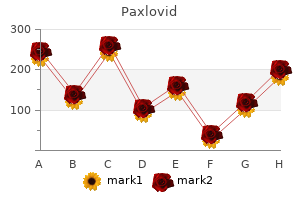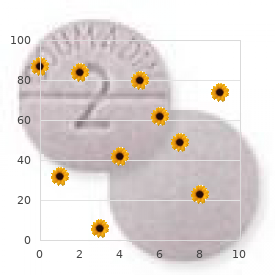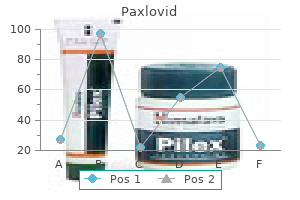"Discount 200mg paxlovid amex, hiv infection game".
By: C. Nemrok, M.A., M.D., M.P.H.
Professor, Western University of Health Sciences
Their results suggest improved functional outcome scores hiv infection of the mouth discount 200mg paxlovid free shipping, as well as hiv infection heterosexual male generic paxlovid 200 mg otc, range of motion in forward flexion and abduction. Malunion the technical approach for implantation must be modified for patients with severely malunited fractures of the proximal humerus. Implantation of the humeral stem often requires increase retroversion >30 degreees. Willis et al reported outcomes of 19 patients with malunited proximal fractures, all of whom required modifications in humeral stem preparation. Native Glenoid Bone Loss Eccentric bone loss provides a challenge component to secure fixation of the baseplate in reverse shoulder arthroplasty. Due to the severity of bone loss limiting contact with the implant that may induce micromotion compromising fixation potentially leading to early failure. Klein et al reported on the results of 56/143 shoulders with abnormal glenoid bone stock with baseplate fixation via an alternative spine line. At two year follow up, no mechanical failure or resorption of the bone graft were observed. This modification for glenoid bone preparation can be useful in patients prone to eccentric and excessive glenoid erosion. Through a standard deltopectoral approach the biceps is identified and tenodesis to the pectoralis major. After mobilization of the subdeltoid, subacromial, and sub-coracoid spaces, 4 non-absorbable sutures are placed into the greater tuberosity, 2 into the lesser tuberosity and 3 into the humeral shaft using a 2. After placement of final compoParis Shoulder Course 2019 Bone Loss Secondary to Failed Arthroplasty Severe glenoid bone loss can also occur in the setting of failed shoulder arthroplasty. Modification of glenosphere selection is incumbent on assessment of a contained versus uncontained glenoid defect. Uncontained glenoid defects with an intact cuff are treated with larger glenospheres, which result in improved load sharing and will theoretically protect the graft from resorption. However, this often leads Currents Concepts in Shoulder Arthroplasty -Altivate reverse total shoulder arthroplasty has been the product of 20 years of surgical experience, evolution of design, and extensive biomechanical and clinical research. It has application for use in various shoulder arthroplasty indication, ranging from proximal humerus fracture treatment to reverse arthroplasty. The options available for this prothesis should be explored as use in a shoulder surgeons armamentarium. Neer Award 2005: the Grammont reverse shoulder prosthesis: results in cuff tear arthritis, fracture sequelae, and revision arthroplasty. The contribution of reverse shoulder arthroplasty to utilization of primary shoulder arthroplasty. Initial glenoid component fixation in ``reverse' total shoulder arthroplasty: a biomechanical evaluation. Biomechanical comparison of component position and hardware failure in the reverse shoulder prosthesis. Reverse Shoulder Arthroplasty for the Treatment of Irreparable Rotator Cuff Tear without Glenohumeral Arthritis. Reverse Shoulder Arthroplasty for the Treatment of Rotator Cuff Deficiency A Concise Follow-up, at a Minimum of Five Years, of a Previous Report*. Reverse Shoulder Arthroplasty for the Treatment of Rotator Cuff Deficiency: A Concise Follow-up, at a Minimum of 10 Years, of Previous Reports. Reverse shoulder arthroplasty in patients younger than 55 years: 2- to 12-year follow-up. Augmented glenoid implants in anatomic total shoulder arthroplasty: review of available implants and current literature. Outcomes of an anatomic total shoulder arthroplasty with a contralateral reverse total shoulder arthroplasty. Neer Award 2006: Biomechanical assessment of inferior tuberosity placement during hemiarthroplasty for four-part proximal humeral fractures. The effect of glenoid bone loss on reverse shoulder arthroplasty baseplate fixation.


Pessary for prevention of preterm birth in twin pregnancy with short cervix: 3-year follow-up study lemon antiviral buy paxlovid 200 mg with amex. Occupational hiv infection stats buy generic paxlovid 200 mg on-line, Environmental, and Lifestyle Factors and their Contribution to Preterm Birth - An Overview. Preterm premature rupture of membranes is a collateral effect of improvement in perinatal outcomes following fetoscopic coagulation of chorionic vessels for twin-twin transfusion syndrome: a retrospective observational study of 1092 cases. Intrauterine insemination versus intracervical insemination in donor sperm treatment. Accuracy of fetal fibronectin for assessing preterm birth risk in asymptomatic pregnant women: a systematic review and meta-analysis. Pregnancy after bariatric surgery: Maternal and fetal outcomes of 39 pregnancies and a literature review. Obstetric complications after frozen versus fresh embryo transfer in women with polycystic ovary syndrome: results from a randomized trial. Short cervix in twin pregnancies: current state of knowledge and the proposed scheme of treatment. Cervical pessaries for the prevention of preterm birth: a systematic review and meta-analysis. What is the safest mode of delivery for extremely preterm cephalic/non-cephalic twin pairs? Early warning system hypertension thresholds to predict adverse outcomes in pre-eclampsia: A prospective cohort study. Prenatal administration of progestogens for preventing spontaneous preterm birth in women with a multiple pregnancy. The frequency and clinical significance of intra-amniotic inflammation in twin pregnancies with preterm labor and intact membranes. Delayed-interval delivery in twin pregnancies: report of three cases and literature review. Association of histological chorioamnionitis and magnesium sulfate treatment in singleton and dichorionic twin pregnancies with preterm premature rupture of membranes: preliminary observations. Pessary or Progesterone to Prevent Preterm delivery in women with short cervical length: the Quadruple P randomised controlled trial. Effect of vaginal progesterone in tocolytic therapy during preterm labor in twin pregnancies: Secondary analysis of a placebo-controlled randomized trial. Principles of first trimester screening in the age of non-invasive prenatal diagnosis: screening for other major defects and pregnancy complications. Induction of Lactation in the Biological Mother After Gestational Surrogacy of Twins: A Novel Approach and Review of Literature. Selective intrauterine growth restriction in monochorionic diamniotic twin pregnancies. Observational study of associations between gestational weight gain and perinatal outcomes in dichorionic twin pregnancies. Re-Thinking Elective Single Embryo Transfer: Increased Risk of Monochorionic Twinning - A Systematic Review. Antenatal corticosteroids for accelerating fetal lung maturation for women at risk of preterm birth. Bed rest with and without hospitalisation in multiple pregnancy for improving perinatal outcomes. Triplet Pregnancy in a Diabetic Mother With Kidney Transplant: Case Report and Review of the Literature. Delayed-interval delivery can save the second twin: evidence from a systematic review. Preterm birth prevention in twin pregnancies with progesterone, pessary, or cerclage: a systematic review and meta-analysis. Worldwide prevalence of adverse pregnancy outcomes associated with in vitro fertilization/intracytoplasmic sperm injection among multiple births: a systematic review and meta-analysis based on cohort studies.

Free hiv transmission statistics united states buy cheap paxlovid 200mg on line, Alexanderteach clinical stages of hiv infection who discount paxlovid 200 mg fast delivery, Alexanderteacher, Alksub, Altenmann, Andonic, AndreK, Anothergareth, Apers0n, Argyriou, Army1987, Atteacher, AxelBoldt, Azaiez, Barrylb, Bellagio99, Ben St. Hartmann, Thunderlippps, Thunderlipppz, Tide rolls, Tiger888, Timc, Timrollpickering, Titoxd, Toddst1, Togays, Tohd8BohaithuGh1, Toliton, TomCerul, Tomdo08, Tommy2010, TonyTheTiger, Tonytrulson, Tr@veler, Transity, TravelingCat, Treisijs, Trevorm, TreyGeek, Trilobite, Tsgttucker, TwoOneTwo, Tyciol, Udaza, Ultra X987, Unileverd, Unnatural20, Urness. Connolley, Xanderk84, Xeos, Xyzzyplugh, Yasth, Zinjixmaggir, 417 anonymous edits Attention Source: en. Stradivarius, MrChupon, MrOllie, Mwanner, Mysid, Nashhinton, Nasnema, Natkeeran, Nesbit, Nievved, Nihil novi, Nihiltres, Nikai, Nikkiopelli, Nlight, Norm, Notinasnaid, Ohnoitsjamie, Oicumayberight, Oli Filth, Oni Ookami Alfador, OsamaK, Ott, P Ingerson, Pavel Vozenilek, Pavlo Shevelo, Pearle, Pedant17, Pedrodurruti, Petermanchester, Phil Sandifer, Philip Trueman, PhilipO, Piano non troppo, Pictureuploader, Pierkolp, Pilibin, Pinethicket, Pink! This tissue is remarkable in the way that it harbours multiple biological structures containing billions of cells, while at the same time featuring full transparency. On the internal surface of the cornea resides the corneal endothelium, a single cell layer that has the important task to safeguard corneal transparency. It is ironic that, despite their crucial task to insure proper vision, human corneal endothelial cells have not been gifted with the proper machinery for cell regeneration, but rather are arrested within the cell cycle and can only restore endothelial cell loss by migration and enlargement. Globally, 285 million people are visually impaired, with 39 million are completely blind. Rationale 9 In order to relieve the immense pressure on the eye banks to procure more donor corneas to help more patients, researchers have been looking to develop an in vitro grown endothelium, thereby mimicking the current corneal endothelial transplants from the clinic. The concept is to expand corneal endothelial cells in the laboratory to make multiple grafts from one donor eye, thereby shortening current waiting lists. Reconstructing (parts of) the human cornea using tissue-engineering approaches have been a research interest since a couple decades. The cornea is attractive for the field of tissue engineering because of its relative simplicity in structure, its avascularity and immune-privileged properties. Furthermore, the cornea is easily followed-up in time without the need for invasive techniques. Compared to the stratified corneal epithelium and the thick corneal stroma, the two-dimensional endothelium is rather elementary in its buildup to reconstruct, as it consists merely of a monolayer of cells grown on a membrane. Despite the many efforts, it is not straight-forward to cultivate corneal endothelial cells in high numbers, nor has the ideal cell scaffold been established. Unfortunately, there are still difficulties in efficiently expanding primary corneal endothelial cells from cadaveric donor corneas on a high scale and the ideal carrier membrane for these cells, also known as a scaffold, is not yet been developed or identified. Additionally, there have been some pharmacological compounds tested in humans that seem to reinforce this process, thereby endorsing this preliminary hypothesis. Furthermore, we gained interest in the behavior 10 of the endothelium in vivo to identify innovative therapeutic options that can supplement current therapeutic modalities. First of all, in chapter one, the healthy corneal endothelium is described in terms of anatomy, embryology and cell biology and its innate relationship with corneal transparency. In chapter two, we touch upon the diseased or dysfunctional endothelium and consequences for vision of the patient. Finally, chapter four discusses how patients suffering from a dysfunctional endothelium are currently treated by means of corneal endothelial transplantation, including a historical overview hereof and the details of corneal endothelial cell therapy. The second part elaborates on three experimental reports that describe the pursuit to anatomically replace a diseased corneal endothelium through scaffold-based methods. Chapter five describes the scientific report on how the human lens capsule, a by-product of cataract surgery, could serve as a scaffold for ex vivo grown cells potentially for transplantation. Since we cannot secure essential integrity of such specimens and its limited diameter, we embarked on a journey to find another biological scaffold that could overcome these issues. Through a European consortium in corneal regeneration, I collaborated with a Taiwanese biotech company that modified the fish scales of Tilapia fish for corneal tissue engineering purposes and tested these together with the Fondazione Banca degli Occhi del Veneto in Venice, Italy, of which the results are summarized in chapter six. During the years, our vision in this field has shifted from biological to synthetic scaffolds. Whereas cell therapy is a straight forward strategy, there has been an increased interest to stimulate the in vivo regeneration of corneal endothelial cells, which is the main focus of part three. Where the current paradigm states that the endothelium is mitotically arrested, we experienced the spontaneous regeneration of the endothelial barrier in patients in our clinic at first hand.



Idarucizumab is a humanized hiv infection rate greece order 200 mg paxlovid mastercard, monoclonal examples of antiviral drugs paxlovid 200mg with visa, antibody fragment that specifically binds with high affinity to dabigatran, an oral direct thrombin inhibitor. It acts by competitively displacing dabigatran from thrombin to reverse anticoagulation and restore fibrin formation. Dabigatran has an affinity for idarucizumab that is 350 times greater than its affinity for thrombin. A dose of 5 g idarucizumab will be administered intravenously to reverse the effect of dabigatran. The trial will measure plasma-diluted thrombin time and ecarin clotting time as primary outcome measures. It has been developed as an antidote to reverse anticoagulant activity of oral direct. The current guideline recommendation is to extend thromboprophylaxis to 35 days from the day of surgery. Serial imaging of the deep veins in 2 weeks when there are no severe symptoms or risk for extension. We suggest treatment with anticoagulation for 3 months over extended therapy if there is a low or moderate bleeding risk (Grade 2B), and recommend treatment for 3 months over extended therapy if there is a high risk of bleeding (Grade 1B). Remarks: Patient sex and D-dimer level measured a month after stopping anticoagulant therapy may influence the decision to stop or extend anticoagulant therapy (see text). In all patients who receive extended anticoagulant therapy, the continuing use of treatment should be reassessed at periodic intervals. Remarks: In all patients who receive extended anticoagulant therapy, the continuing use of treatment should be reassessed at periodic intervals. Remarks: In all patients who receive extended anticoagulant therapy, the continuing use of treatment should be reassessed at periodic intervals (eg, annually). Use of aspirin should also be reevaluated when patients stop anticoagulant therapy because aspirin may have been stopped when anticoagulants were started. Remarks: Patients at high risk for bleeding are more likely to benefit from serial imaging. Patients who place a high value on avoiding the inconvenience of repeat imaging and a low value on the inconvenience of treatment and on the potential for bleeding are likely to choose initial anticoagulation over serial imaging. Patients and physicians are more likely to opt for clinical surveillance over anticoagulation if there is good cardiopulmonary reserve or a high risk of bleeding. Development of hypotension suggests that thrombolytic therapy has become indicated. Remarks: Catheter-assisted thrombus removal refers to mechanical interventions, with or without catheter directed thrombolysis. Even though it was a non-inferiority study, the final analysis showed dabigatran to be superior to warfarin. Both low-dose and high-dose dabigatran were associated with a statistically significant increase in rate of myocardial infarction (0. Which of the following antiplatelets would be best to start in combination with aspirin 324 mg in this patient for prevention of stent thrombosis? What is the proposed rationale behind avoiding concomitant use of ticagrelor with aspirin doses above 100 mg per day? Concomitant use of ticagrelor and aspirin >100 mg daily may result in decreased efficacy of aspirin B. Concomitant use of ticagrelor and aspirin >100 mg daily may result in decreased efficacy of ticagrelor C. Concomitant use of ticagrelor and aspirin >100 mg daily may result in intolerable gastrointestinal adverse events that may lead to drug discontinuation D. Concomitant use of ticagrelor and aspirin >100 mg daily may result in increased hypersensitivity to aspirin 3. She has been on long-term warfarin therapy for secondary stroke prevention with a history significant for atrial fibrillation and ischemic stroke (2011). You would like to consider transitioning her to rivaroxaban as this is what her insurance company will cover. Discontinue warfarin; start rivaroxaban after 35 days of discontinuation of warfarin D. Labs from his current admission observe notable increases in blood urea nitrogen/serum creatinine and decreased urine output, suggesting signs of acute kidney injury.
Discount paxlovid 200 mg mastercard. HIV Pathophysiology (3/3) - Disease Progression.

